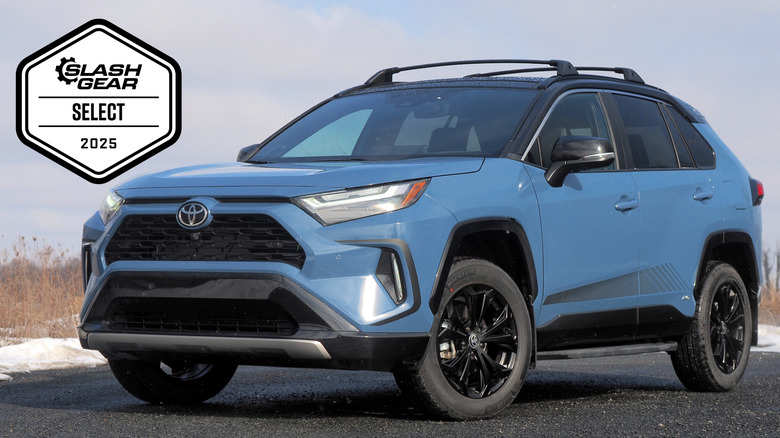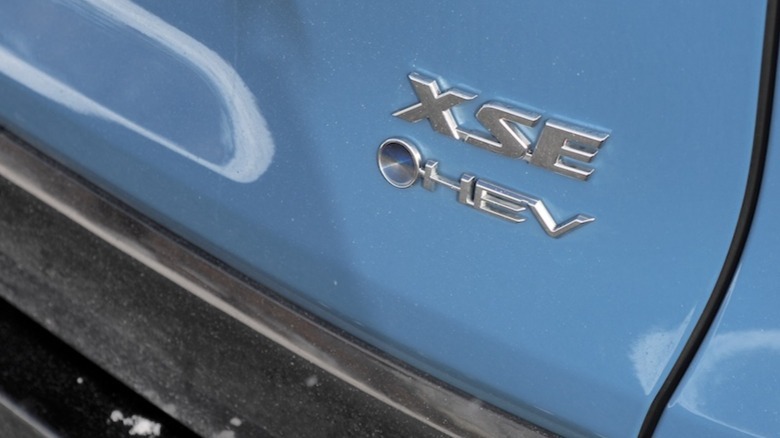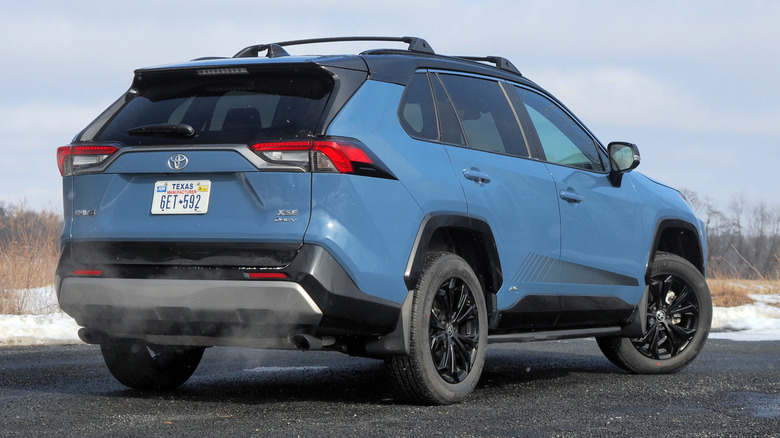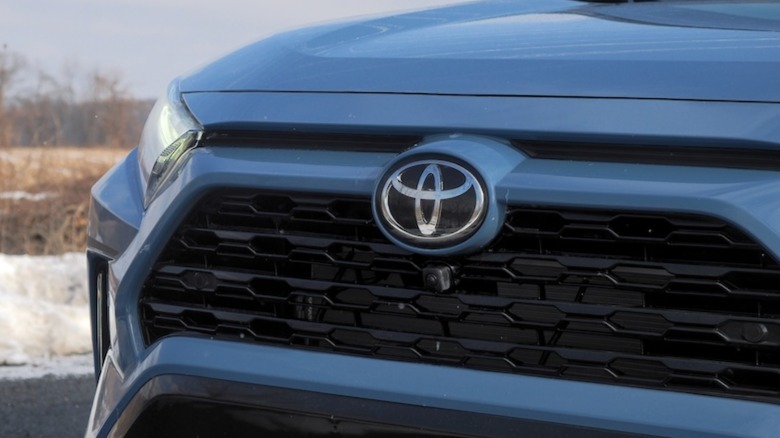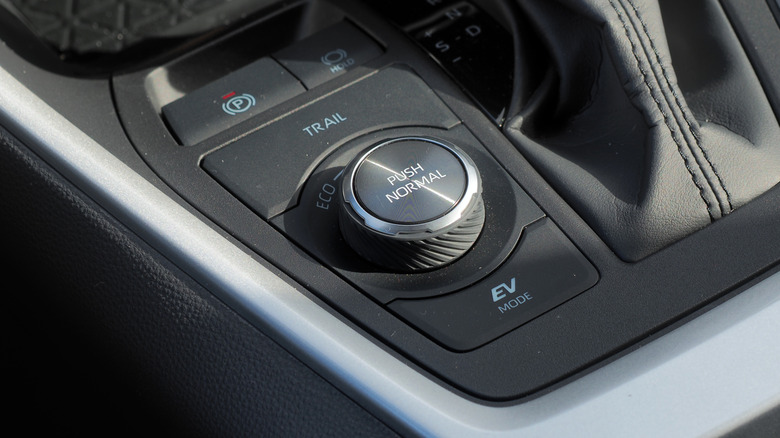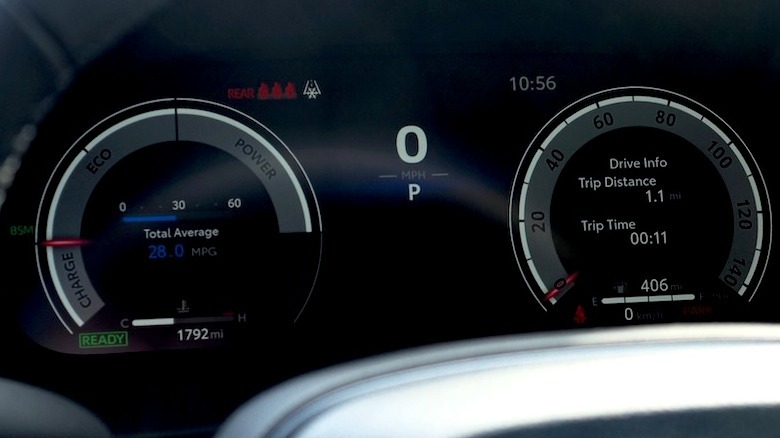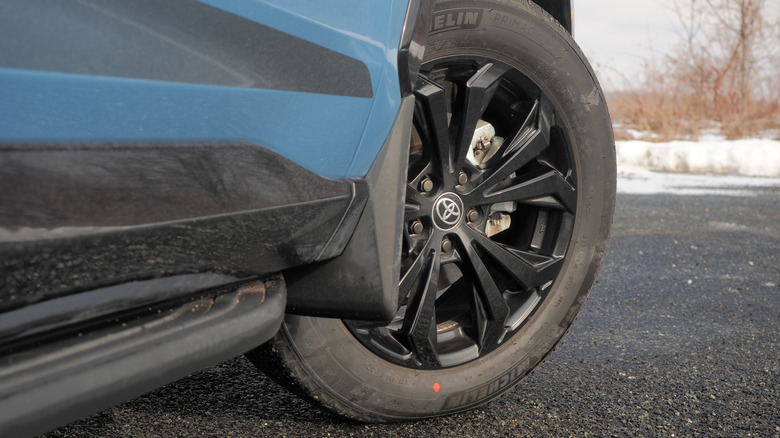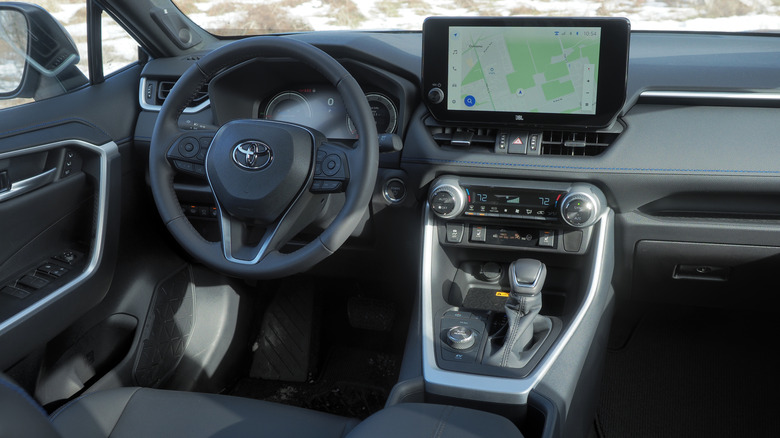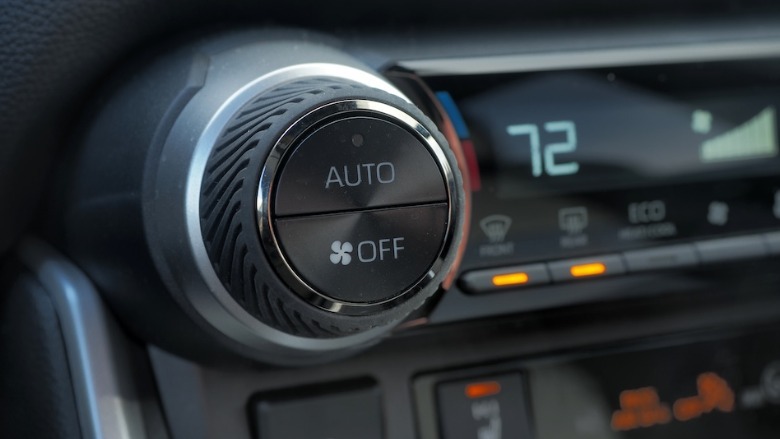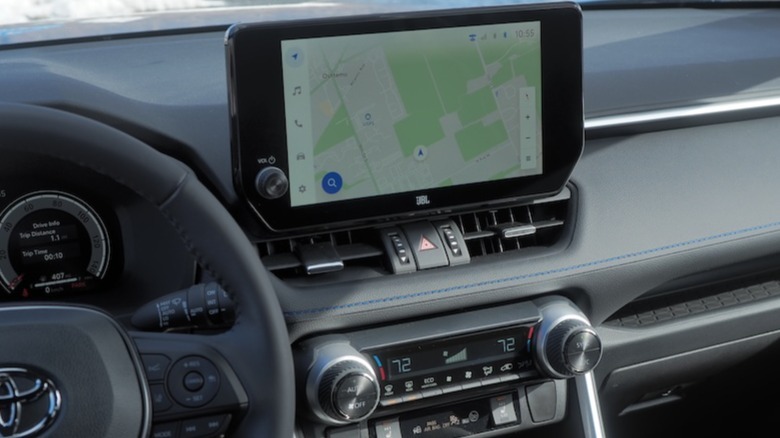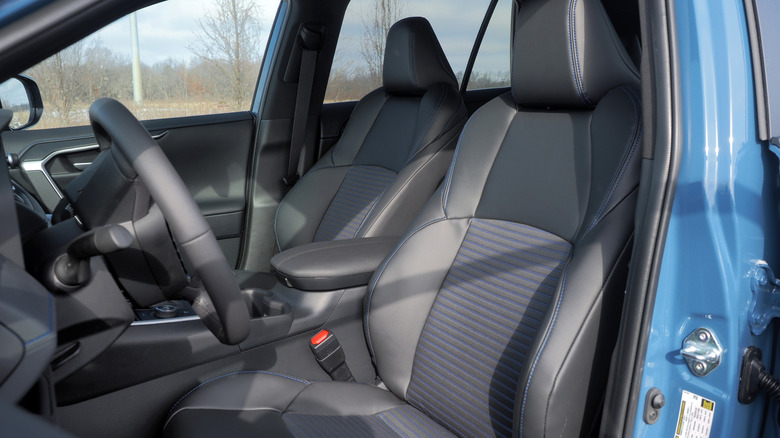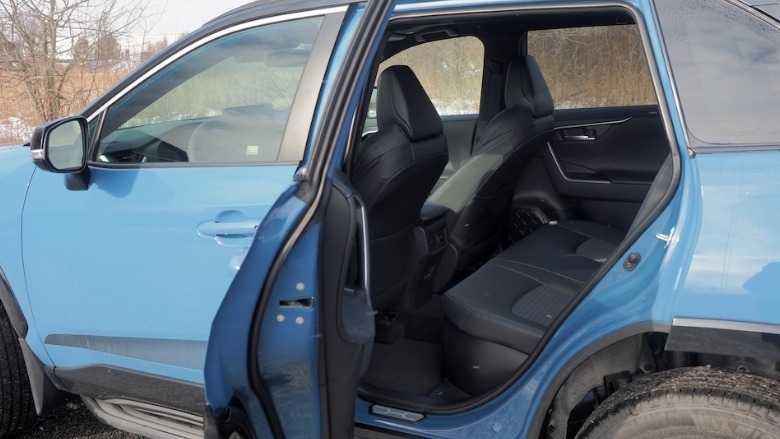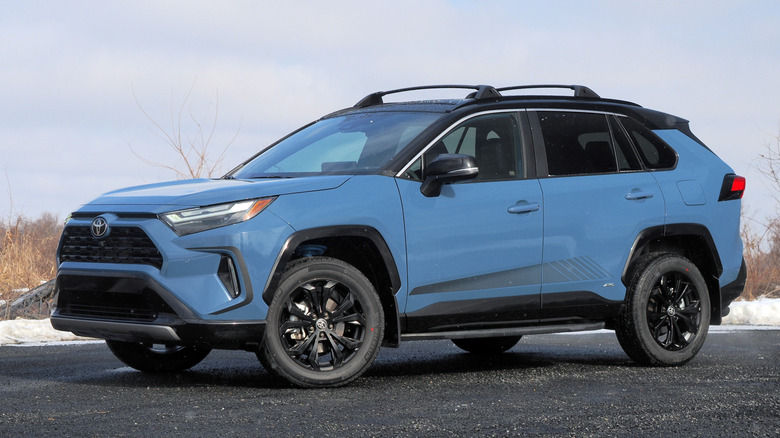2025 Toyota RAV4 Hybrid Review: Affordable Crossover Plays It Safe
- Electrification adds a bump in everyday performance
- Cabin is straightforward and easy to navigate
- Going hybrid doesn't involve a huge price leap
- Not exactly a thrilling ride
- Some competitors have more cabin and trunk space
- Tech is conservative compared to rivals
On paper, it's the perfect combination. Take Toyota's perennially-popular RAV4, throw in the automaker's well-established hybrid drivetrain, and slap on a reasonable price tag for a new compact SUV. For those in need of crossover practicality and a little extra fuel economy, the 2025 RAV4 Hybrid's talents are hardly hidden.
Toyota's not the only electrified player in the segment, though, and — despite arguably being instrumental in creating the category in the first place — the RAV4 isn't necessarily the automatic choice anymore. Because, while frugality is important, and the Toyota badge appealing to many, appealing competitors are circling like hybrid sharks.
The RAV4 is the clear heavy-hitter in Toyota's line-up. The automaker sold over 475,000 in the U.S. in 2024, comfortably besting Camry (309,000), Corolla (232,908), and Tacoma (193,000) in second, third, and fourth places respectively. In fact, last year in the U.S., RAV4 sales alone eclipsed sales of every Lexus model combined.
There's a roughly $3,000 premium for the hybrid
There's a reason, of course, that the RAV4 is so popular. Or, more accurately, a cluster of reasons that leaves Toyota's compact crossover at the appealing center of a Venn diagram for a mighty competitive segment. Aggressively priced, practically sized, and offering a variety of drivetrains, about the only thing missing is a full EV.
The RAV4's exterior design gradually shed its soft curves over the space of five generations: the result is certainly angrier looking, though I might not say handsome. I do like the two-tone paint finish available on the XSE trim, with a contrast black roof; there's also a Woodland Edition, with ever so slightly burlier styling. Wheels range in size from 17 to 19 inches.
2025 RAV4 ownership starts at $28,850 (plus $1,395 destination) for the gas-only model. The RAV4 Hybrid kicks off at $31,900, while the plug-in hybrid version begins at $44,265 (both before destination). While the cheapest gas versions are front-wheel drive, with all-wheel drive a paid upgrade, both of Toyota's electrified versions are AWD as standard.
Don't expect much electric range
A 2.5-liter inline-four gas engine is standard across the board. For this hybrid version, Toyota adds electric motors, to take the total system horsepower from 203 hp to 219 hp. While the non-electrified RAV4 uses a mechanical AWD system, the hybrid and PHEV versions rely on electronic AWD: a dedicated rear electric motor to drive the back wheels.
Clearly, if you want the most power, you go for the plug-in hybrid. That upgrades the electric motors, for a system total of 302 horsepower. It's also the pick if you want genuine electric-only range: the RAV4 PHEV is rated for up to 42 miles of that, whereas — though it has an EV Mode button — the RAV4 Hybrid's diminutive battery is only good for short distances (think under a mile) at lower speeds. Lean into the accelerator with any degree of urgency and the gas engine will automatically be roused, regardless of drive mode.
The advantage, mind, of the RAV4 Hybrid is convenience. Or, more specifically, not demanding behavioral change to achieve its better fuel economy. You don't need to plug it in — you can't plug it in, in fact — with the battery instead topped up as you brake, or when the engine isn't being used to its full capacity.
A reassuringly placid driving experience
Toyota is indelibly associated with hybrids, though it currently has several versions of its electrified drivetrains in production. The RAV4 Hybrid's is different from that of the Prius, for example: it has a bigger gas engine and is more powerful overall. I prefer that of the crossover.
Where the Prius engine can sound disconnected from how the car is actually driving, the RAV4 behaves far more predictably. That's not to say it's necessarily a nice noise — the 2.5-liter gas engine is okay but never going to be accused of being too refined or quiet — but in combination with the continuously variable transmission (CVT) it avoids the swooping and wavering that can leave some hybrids disconcerting. The RAV4's more potent electric motors leave it perkier from a standing start, too, and when diving around town.
There are Normal, Eco, Sport, and Trail drive modes, along with EV Mode. Even at its most punchy, the RAV4 Hybrid certainly isn't a sports SUV — again, you want the PHEV version for maximum pep, though even then the CVT and heavily assisted steering mean this is far from an engaging experience — but there's more than enough power on tap here, for most drivers. Toyota selectively engages the rear motor when drive mode or traction needs demand it.
Toyota Safety Sense 2.5 is standard across the hybrid line, including pre-collision assistance with pedestrian detection, adaptive cruise control, lane departure alerts with steering assist, and lane tracing assist. Not every trim gets blind spot warnings and rear cross-traffic alerts, though, nor front and rear parking sensors.
The cabin is functional and leans into physical switchgear
Toyota's cabin has an overall sense that, when asked to choose between practical or high-tech, the RAV4 Hybrid's designers invariably erred on the side of the former. The HVAC temperature knobs are huge and easily-twiddled; the heated leatherette seats have physical switches that toggle between high and low; and the transmission and drive modes get big, obvious controls.
Dare I say it, the RAV4's dashboard feels fairly old-school — despite the 10.5-inch infotainment touchscreen and fully digital gauge cluster, plus the wireless phone charger that's included in the $2,010 XSE Technology Package, along with front and rear parking sensors, and 360-degree camera — and I don't think that's a bad thing. There's something undeniably reassuring about it, and though I wish Toyota hadn't hidden so many buttons down by the driver's left knee (including the shortcut for the exterior cameras) it's leagues better than having to dig through a touchscreen.
Toyota's latest infotainment system is no slouch, mind, and there's wireless Apple CarPlay and Android Auto. Five USB ports have been scattered around; $200 added a digital rearview mirror; a further $500 topped the cabin with an opening panoramic glass roof. The $375 XSE Weather Package adds a steering wheel heating — with a physical switch that'll stay on, even if you power-cycle the car — plus rain-sensing wipers and windshield wiper de-icing. Finally, the $580 JBL upgrade boosts the amp and adds a subwoofer, though even then I'd say the overall sound performance is only average.
Somewhere in the middle
Toyota's approach is very different from that of Hyundai and Kia, with their respective rivals to the RAV4. The Tucson and Sportage have markedly more high-tech dashboards, which will either please the tech-savvy or dissuade the gadget-averse. What isn't up for interpretation is overall scale. The RAV4 Hybrid's legroom (41 inches front and 37.8 inches rear) falls short of both the Tucson's and the Sportage's (each boast 41.4/41.3 inches) and indeed the rear cabin of the Toyota feels, not small, but a little more snug.
It's a similar story for cargo space. The RAV4 Hybrid promises 37.5 cu-ft, or 69.8 cu-ft with the rear seats folded (a dual height load floor is one fun hidden feature). The Kia, however, bumps that up to 39.6 and 74.1 cu-ft, respectively, or 38.7 and 74.8 cu-ft in the Hyundai.
Even Toyota's warranty isn't looking quite so hot, compared to what its South Korean competitors are offering. The RAV4 Hybrid has a 3 year / 36,000-mile basic warranty, with 5 years / 60,000 miles of powertrain coverage (along with 10 years / 150,000 miles for the hybrid system specifically). Kia and Hyundai, meanwhile, include 5 years / 60,000 miles of basic coverage, and 10 years / 100,000 miles of powertrain coverage.
Toyota throws in two years (or 25,000 miles) of scheduled maintenance for the RAV4. That's better than Kia, which has no bundled maintenance, but Hyundai includes it for 3 years / 36,000 miles.
2025 Toyota RAV4 Hybrid Verdict
The Toyota brand carries a lot of weight, as does the RAV4 nameplate. A Toyota hybrid is a known-quantity, too (and the automaker's better-than-rivals warranty for the electrified elements doubles-down on that). It's hard to argue that the 2025 RAV4 Hybrid isn't the sensible choice.
There's definitely more interest elsewhere, though. If you're looking for cabin tech, Kia and Hyundai lean into that aspect; Mazda's CX-50 Hybrid is more engaging to drive than the Toyota. Honda's CR-V Hybrid has more legroom front and rear, and its maximum cargo space is greater than the RAV4 Hybrid, though the latter is slightly more powerful.
As all-rounders go, the 2025 RAV4 Hybrid strikes a solid balance. Were it my money, I'd probably skip this loaded XSE — which lands at $45,443 including destination, all-in — and look to cheaper trims: crossovers in this segment seem to shine best when they're happy little workhorses. On that front, decent frugality without having to think about plugging-in, paired with Toyota's reputation, makes the electrified RAV4 an easy recommendation, even if it's not an especially exciting one.
